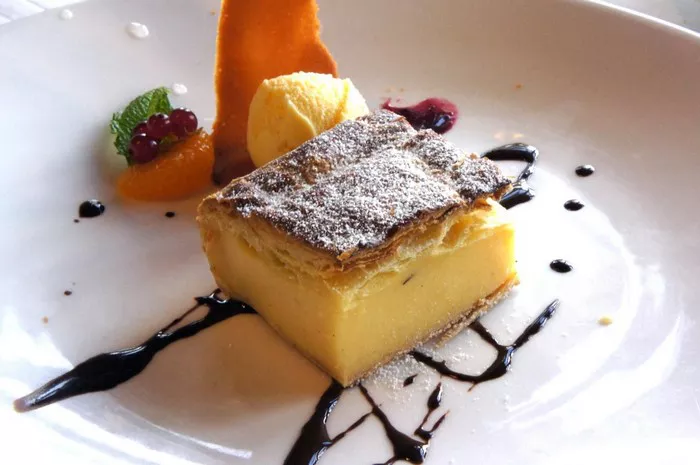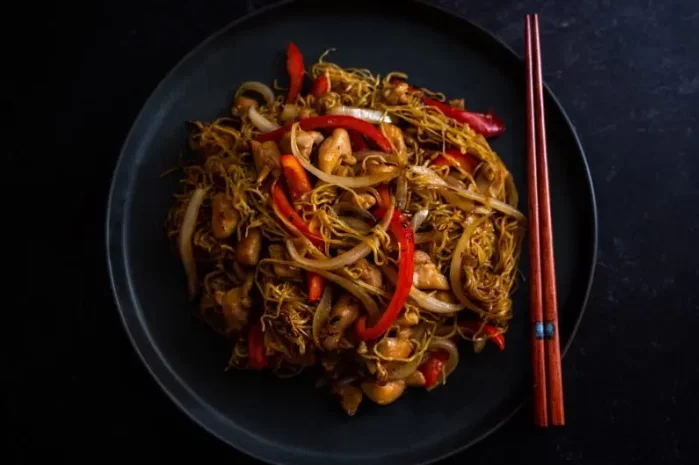Dim sum is a popular Chinese cuisine consisting of small, bite-sized dishes typically served in steamer baskets or on small plates. It’s a meal meant to be shared, and it’s an experience as much as it is a meal. Whether you’re new to dim sum or a seasoned enthusiast, ordering the right amount can be tricky. Ordering too much can leave you with food waste, while ordering too little can leave you hungry. This guide will help you determine how much dim sum to order based on various factors, ensuring a satisfying meal for everyone.
Understanding Dim Sum Portions
Dim sum dishes are generally small, but the variety can be overwhelming. Some dishes come in small portions, like dumplings, while others, like buns, may be larger. In most dim sum restaurants, food is served in portions of 3-4 pieces per dish, but it can vary. The key to ordering the right amount is understanding the portions and the appetite of your group.
Number of People in Your Group
The first step in figuring out how much dim sum to order is to know the number of people in your group. The more people, the more dim sum you’ll need. Dim sum is all about variety and sharing, so it’s best to order a wide selection.
For a group of 2 to 3 people:
- Plan for 3-5 dishes per person. This typically provides enough variety and allows everyone to try different items.
- If your group prefers to sample everything, you may want to order closer to 5 dishes per person. This might include 2-3 savory options and 1-2 dessert items.
For a group of 4 to 6 people:
- Aim for 4-6 dishes per person. This will ensure that everyone can try a bit of everything.
- Ordering about 20-30 dim sum dishes should be sufficient for a group of 5, with some room for seconds if people are still hungry.
For a group of 7 or more:
- Ordering 5-7 dishes per person is a good guideline. For large groups, the portions should be generous to avoid anyone going hungry.
- Expect to order anywhere from 35-50 dishes. Larger groups also give you the flexibility to order larger portions of certain popular items like dumplings and buns.
Types of Dim Sum Dishes to Consider
There’s a wide range of dim sum items, and different types may have varying portion sizes. Here’s an overview of the common categories of dim sum, which will help you balance your order.
Dumplings
Dumplings are the star of most dim sum menus. There are a few types you’ll typically see:
Shumai (Pork Dumplings): These are filled with ground pork and sometimes shrimp, topped with a small piece of roe. A typical order will have 3-4 pieces.
Har Gow (Shrimp Dumplings): These delicate dumplings are filled with shrimp and wrapped in a translucent dough. Like shumai, they usually come in a set of 3-4.
Xiao Long Bao (Soup Dumplings): These dumplings are filled with a rich broth and are often larger than shumai and har gow. A set of 3-4 is standard.
When ordering dumplings, consider how many different types you want to sample. If your group loves dumplings, it’s wise to order a few different kinds.
Steamed Buns
Steamed buns are typically larger and can be quite filling. They come in two basic types:
Char Siu Bao (BBQ Pork Buns): These are fluffy, soft buns filled with sweet BBQ pork. Depending on the restaurant, you may get 2-3 buns per order.
Lotus Seed or Red Bean Paste Buns: These are sweet buns filled with lotus seed paste or red bean paste. These are usually a bit smaller than savory buns.
Because buns tend to be filling, you don’t need to order too many of them, especially if you have other dishes on the table. One or two orders of buns for every 3-4 people is usually enough.
Noodles and Rice
Although dim sum is primarily small bites, you can also find noodle and rice dishes on many dim sum menus:
Chow Mein: Stir-fried noodles with vegetables and a choice of meat (usually chicken, beef, or shrimp).
Cheung Fun (Rice Noodle Rolls): These are wide, soft rice noodles often filled with shrimp, beef, or char siu. An order typically comes with 2-3 rolls.
Congee (Rice Porridge): A rice porridge often served with savory toppings like pickled vegetables, salted eggs, and pork. This is more of a comfort food item and can be ordered for groups to share.
If you’re ordering rice or noodles, you might only need one or two dishes for a group of 4-6 people. These items tend to be filling and can serve as the base of the meal.
Fried Dim Sum
Some dim sum dishes are fried, offering a crispy contrast to the softer, steamed items. Here are a couple of popular choices:
Spring Rolls: Usually filled with vegetables and sometimes meat. A serving typically includes 3-4 rolls.
Fried Dumplings: These are dumplings that are pan-fried, giving them a crispy texture on the bottom. You’ll typically get 3-4 per order.
Crispy Tofu: A crunchy yet soft tofu option, often served with a soy-based dipping sauce.
Fried dishes can be a nice addition, but they tend to be heavier. A few orders of fried food for 4-6 people will likely suffice, as they can fill you up quickly.
Vegetables and Sides
Vegetable dishes balance out the meal and add freshness. Some common options include:
Steamed Vegetables: Lightly seasoned steamed vegetables, often served with soy sauce.
Vegetarian Dumplings: Dumplings filled with a mixture of mushrooms, tofu, and other vegetables.
Pickled Vegetables: A tangy and crunchy side that complements the richness of the other dim sum dishes.
Vegetable dishes are often lighter and can be ordered in larger quantities. For every 5-6 savory dishes, consider adding one or two vegetable options.
Dessert Dim Sum
Dim sum also includes sweet treats to finish off your meal. Common dessert options include:
Egg Tarts: Flaky pastry filled with a sweet egg custard, often served warm.
Sesame Balls: Fried dough filled with sweet red bean paste and rolled in sesame seeds.
Sweet Tofu Pudding: A soft tofu dish served with sweet syrup or ginger sauce.
For dessert, one or two orders per group are usually enough, especially if you’ve already had a filling meal.
Special Considerations
There are a few additional factors to keep in mind when deciding how much dim sum to order:
Eating Speed
Dim sum is typically served in a leisurely, unhurried manner. In most restaurants, the food arrives as it’s prepared, so you can order in waves. This is helpful because it allows you to adjust your order based on how full you are.
If your group is slower to eat or enjoys chatting between bites, you might want to order fewer dishes initially, with the option to order more once you’ve had a chance to sample the first round.
Dietary Preferences and Restrictions
If anyone in your group has dietary preferences or restrictions, such as vegetarian or gluten-free diets, make sure to factor this into your ordering. Some dishes can easily be adapted (e.g., swapping meat for tofu or selecting gluten-free options), while others may not be available.
Be sure to communicate any dietary needs with the restaurant, especially if you’re ordering for a large group.
Leftovers
Dim sum can be tricky when it comes to leftovers. While some dim sum items like dumplings and buns may keep well for a short period, others are best eaten fresh. If you’re ordering for a large group, consider the potential for leftover food. If you’re unsure, it’s better to start with a smaller amount and order more if needed.
Final Tips for Ordering Dim Sum
Order in Waves: Start with a modest amount and order more as you go. It’s easy to add more dishes to the table, but harder to reduce the amount once you’ve ordered.
Ask the Waitstaff: Don’t be afraid to ask for recommendations. If you’re unsure how much food to order, the restaurant staff can often help based on the size of your group.
Group Preferences: Know the likes and dislikes of your group. If everyone loves dumplings, order a variety of dumplings. If someone is vegetarian, make sure to include plenty of vegetarian options.
Plan for Dessert: Don’t forget to leave room for dessert. Dim sum isn’t complete without something sweet to end the meal.
Conclusion
Ordering the right amount of dim sum is a balancing act. By considering the number of people, the types of dim sum you want to try, and the appetite of your group, you can ensure a satisfying meal without waste. Whether you’re dining with a few friends or a large group, follow these guidelines, and you’ll be sure to enjoy a memorable dim sum experience.
Related topics:























